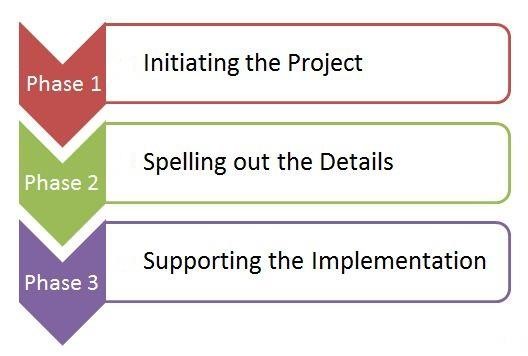Role of a Business Analyst in Software Projects
Category: Agile Business Analysis Posted:Apr 26, 2016 By: Alvera Anto Software projects are considered as the responsibility of the technical team of the company and to successfully accomplish the project they rely on the best techies in their arsenal. Hence, they focus on hiring or retaining skilled IT professionals of that particular domain as per the requirement of the software project.
Software projects are considered as the responsibility of the technical team of the company and to successfully accomplish the project they rely on the best techies in their arsenal. Hence, they focus on hiring or retaining skilled IT professionals of that particular domain as per the requirement of the software project.
Business Analyst also plays an equivalent role in achieving the milestone.
Business Analysts work with key line-of-business executives and users from the very beginning till the end to understand, implement, support and deliver the Software Project as desired. BA’s visualize the whole thing and works along with the business side as well as the technology side of the project.
In Software Projects, BA’s role is very vast, but to simplify and make you easily understand, it is broken down below describing the whole development process into the three major Phases as follows:
Now, let’s see it in detail.
- Initiating the Software Project: Firstly, Business Analysts have to work with the stakeholders or key business partners to study the systems and operations and identify preliminary issues pertaining to the problem. Then it is decided whether to fund the project or not. If decided to fund the project then the next step is to formulate and communicate the vision for the project and plan road-map of the project meetings with key stakeholders and business executives.
Next step is brainstorming sessions, perform gap analysis and look into the problem at different angles. There needs to be prepared documentation of both the functional and nonfunctional requirements. One of the most important parts of the Business Analysis process is to avoid the “Unnecessary” which saves time and money.
- Spelling out the details of the Software Project: After kicking off the project, the second step is to elaborate all the details and requirements to the implementation team and help them understand the technical aspects of the solution.
Based on the requirements and details the following is created:
- Prototype
- Use Cases
- Wireframes
- Mockups
- Screens
- SRS (System Requirements Specification)
- BRD (Business Requirements Documents)
- Data or Process Models (for large projects)
When the technical team has all the details about what is to be designed and starts implementing the software solution, and the stakeholders and business executives are signed off, the Business Analyst’s role shifts from an active one to a reactive one.
- Supporting the implementation of the Software Project: BA’s are not involved directly in this phase. Now, BA’s role is just to support the implementation process unless any new requirement occurs in between the process.
After the implementation has been done, the active role of a Business Analyst begins again. BA conducts functional and usability testing of the implemented software solution and recommends corrective and preventive actions, if necessary. BA works with stakeholders to validate the requirements via reviews, walkthroughs, and play-acting.
During the implementation process, if new needs or requirements occur, the Business Analyst may initiate new projects and then this cycle will repeats.
Conclusion
For more informative and engaging articles on Business Analysis, feel free to visit our website.
Also, at ZaranTech we offer self-paced online training of Business Analysis and various other SAP, Workday topics. To learn more about our courses, please visit our website.
Watch BA Full Course For Beginners:






 99999999 (Toll Free)
99999999 (Toll Free)  +91 9999999
+91 9999999